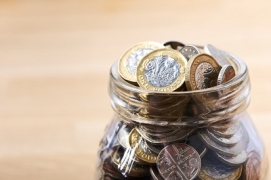Archived article
Please note that tax, investment, pension and ISA rules can change and the information and any views contained in this article may now be inaccurate.

The Cash ISA glut has some legs left in it yet, as savers ploughed a further £3.4 billion into these tax shelters in June, according to the latest figures released by the Bank of England. This compares to average June inflows of £700 million in the previous 10 years. Until recently that size of inflow would have been more associated with the end of the tax year deadline when everyone rushes to make the most of their ISA allowances at the last minute.
Savers are clearly ploughing more money into ISAs because of attractive interest rates and high taxes. For many years, Cash ISAs lay dormant because of a combination of super low interest rates and the Personal Savings Allowance, which meant tax wasn’t a pressing issue when it came to cash savings. That’s all changed now interest rates have risen, and people are getting bumped up into higher tax bands because of frozen thresholds.
The interest rate cycle looks to be near its peak, with central banks starting to loosen policy and cut rates. This week the Bank of England is due to rule on whether to cut rates, a decision which rests on a knife edge. Although rates can probably be expected to fall in the coming months, they will still remain elevated when set against the long period of ultra-loose monetary policy before the Bank started hiking in 2021, and so reasonable levels of savings are therefore likely to require evasive action to avoid an unnecessary tax bill. We’ve seen this sort of behaviour spilling over into the government bond market too, with some investors buying short-dated, low coupon gilts to try to reduce their tax liabilities.
For many people, saving into a Cash ISA is prudent financial planning, but there is a question mark over whether some may be hoarding too much cash, and not taking on investment risk in search of better long-term returns.
Figures from HMRC show that three million people have more than £20,000 held in a Cash ISA, but haven’t put a penny into a Stocks and shares ISA. Meanwhile, the Financial Conduct Authority (FCA) is on a mission to get more people investing rather than holding cash. It appears the regulator may be swimming upstream on this one though. Since 2021, the number of people holding more than £10,000 in investible assets wholly or mainly in cash has risen from 8.4 million to 11.8 million*.
The new Labour government is keen to stoke investment in UK shares, but it might first want to give some thought to how to foster a culture of investing in shares, period.
For savers who have yet to move their money into an ISA or a top-paying savings account, there are a few things to consider.
Five ways for savers to maximise their returns
1. Keep as little as possible in current accounts
These accounts are transactional and consequently tend to pay very low levels of interest – if any at all. Make sure you do leave enough in there to cover bills and outgoings though to stop you dipping into your overdraft and paying interest and fees.
2. Shop around for the best rate
Trusting your high-street bank or existing provider to give you the best deal on savings won’t get you very far. Use comparison sites or cash savings hubs to find and compare the best rates available on the market.
3. Don’t forget ISAs
You may not be able to get as much in interest from an ISA as the very top savings accounts, but after tax, the protection afforded by the ISA could mean you end up better off. It depends what rate of income tax you pay and how much interest you have from other sources. That’s because the Personal Savings Allowance allows you to receive a certain level of interest tax-free every year. For basic rate taxpayers, this amount is £1,000, for higher rate taxpayers, it’s £500, and for additional rate taxpayers, it’s £0. Interest received annually above these levels is taxable and would therefore benefit from being held in a Cash ISA.
4. Consider Government bonds (gilts)
DIY investors have been ploughing large sums of money into bonds issued by the UK Government that don’t have long until they mature but don't pay high levels of interest. These come with a government guarantee of repayment when they mature and much more attractive rates of return now interest rates have risen. The particular appeal though is that capital gains from gilts are tax-free, so if you can identify bonds where almost all the return is coming from capital appreciation rather than an income, you pay less income tax. This approach is only for those who understand gilts and are willing to roll up their sleeves to find appropriate bonds. Find out more about investing in bonds.
5. Think about investing
Conventional financial advice is you should have three to six months of essential costs in cash, so if you’ve already got this parked in cash accounts, you should think about investing any excess for the longer term. Data from Barclays shows that over 10 years there is a 91% chance shares will outperform cash.**
*Source: FCA, Consumer Investments Strategy update
**Source: Barclays Equity Gilts Survey, 2023
Ways to help you invest your money
Put your money to work with our range of investment accounts. Choose from ISAs, pensions, and more.
Let us give you a hand choosing investments. From managed funds to favourite picks, we’re here to help.
Our investment experts share their knowledge on how to keep your money working hard.

